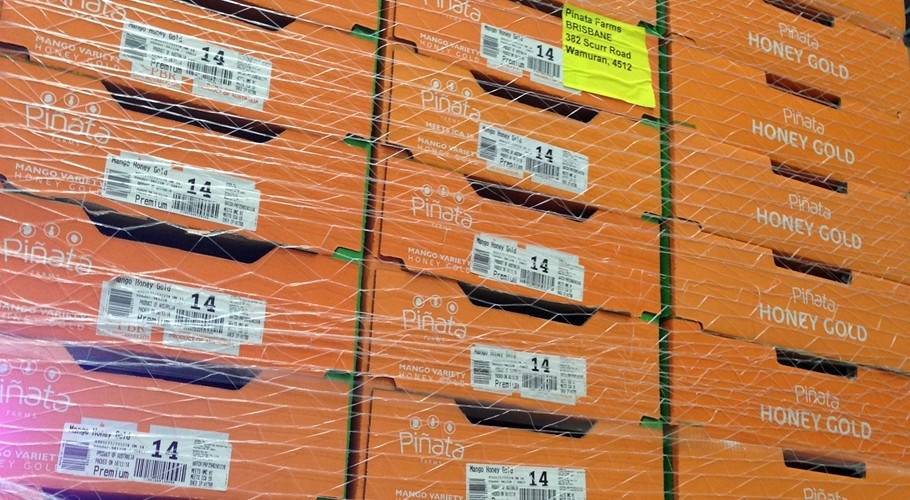Queensland-based specialty mango producer, Piñata Farms Pty Ltd, has begun picking its first Honey Gold mangoes for the season with the promise that consumers can expect a record crop this summer.

Managing director, Gavin Scurr, said Piñata Farms expected to send approximately 450,000 trays of Australia's distinctive, sweet mangoes to market between November and next March – an increase of some 33 per cent on last year.
Fruit currently being picked at Katherine and Mataranka in the Northern Territory will arrive on supermarket shelves nationally on November 24.
"Last year, we sent about 299,000 trays, largely because a warmer-than-usual winter in the Top End affected the yield from that region. This season, conditions in all growing regions around Australia have been ideal. Although a cool start to spring has taken the edge off it being 'perfect', we're extremely happy with the volume and quality of fruit and the way the season is shaping up," he said.
"Another favourable factor is that many of our trees are between eight and 10 years old and are reaching full production, while others aged between three and five years are producing fruit for the first time."
Mr Scurr said Queensland would produce about 60 per cent of the total Honey Gold crop, harvesting fruit for 14 weeks from early December. Significant volumes will appear in-store in time for Christmas.
The Northern Territory would produce some 30 per cent of this year's crop, with the remainder grown in New South Wales, Victoria and Western Australia, he said.
About eight per cent of the crop would be exported to New Zealand, Singapore, Hong Kong, China, South Korea and Russia. Exports to the United States would follow once the quarantine protocol for Australian mangoes was finalised, most likely in the New Year, he said.
Market share continues to grow
Piñata Farms has 140,000 trees on 500 hectares under cultivation. Honey Gold mangoes are grown exclusively by Piñata Farms and 36 contracted growers. It has an eight per cent share of Australia's mango market and is on track to reach a 10 per cent share by 2016 when immature trees reach full production.
Mr Scurr said Piñata Farms was exploring new growing regions in New South Wales, Victoria and the Northern Territory to extend both ends of the season.
"Ideally, we want to extend the season into April and close the small gap in production between our New South Wales and Victorian growing regions. We are currently in negotiations with third party growers along the Darling River in western New South Wales and others in the Darwin region," he said.
Piñata Farms continued to invest substantially in research and development with the key objective being to increase marketable yield, he said.
First commercialised in 2009 after Piñata Farms bought the plant breeders' rights to the variety, Honey Gold mangoes were bred by chance in Central Queensland's Rockhampton region. They are a natural result of a Kensington Pride off-type which was pollinated by an unknown variety.
Honey Gold mangoes have a robust, intensely sweet flavour and, at 500-600 grams each, are among the largest mangoes available in Australia. They also have a small seed-high flesh ratio. They are available at leading supermarkets and independent retail stores under the Piñata brand Australia-wide.
Honey Gold mango growing regions
- Katherine and Mataranka, Northern Territory.
- Giru, Bowen, Dimbulah, Mutchilba, Rockhampton, Yarwun, Benaraby, Bundaberg, Wamuran and Gatton, Queensland.
- Byron Bay and Coffs Harbour, New South Wales.
- Robinvale and Mildura, Victoria.
- Kununurra and Carnarvon, Western Australia.
